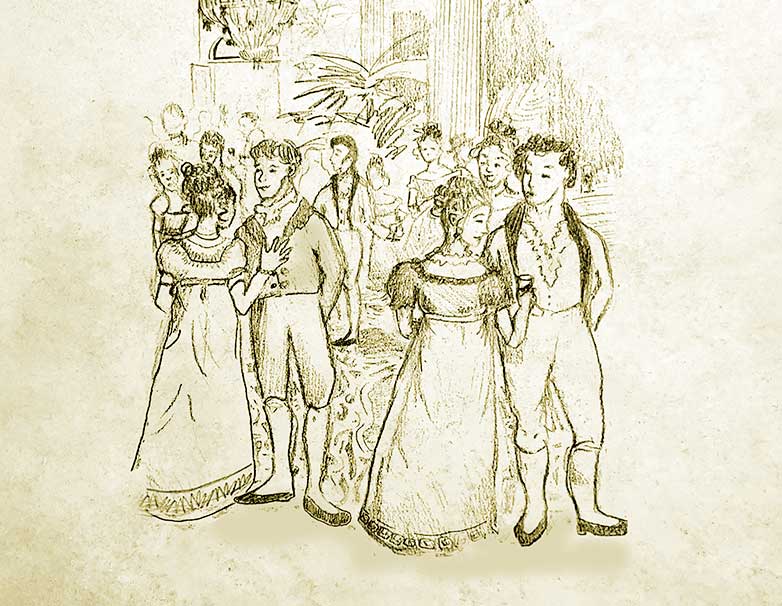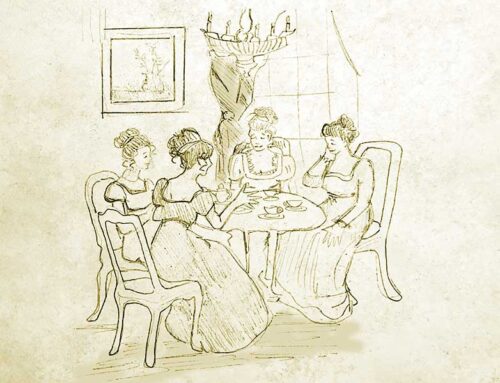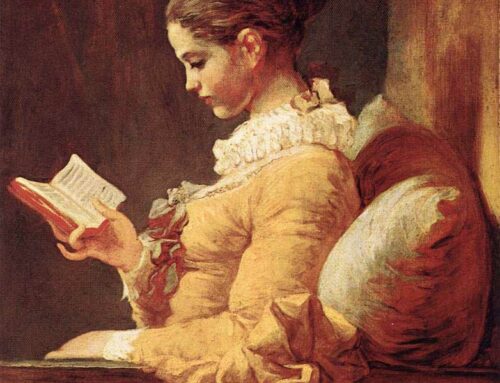
A Brief Introduction to the British Peerage in the Regency Era
If the wife of a viscount is a viscountess, why isn’t the wife of an earl called an earless? When I first began reading stories that dealt with the English aristocracy, I often asked myself questions like this. There was no Google at the time, so searching for the answer was consuming and I didn’t care enough to put in the work. Now, thanks to search engines, I can offer an explanation.
The title earl is based on the Old English word eorl, which means “a man of noble birth or rank.” There is no female equivalent. The wife of a baron is a baroness, the wife of a viscount, a viscountess. Perhaps it was thought that “earless” just sounded silly! The rank of earl is equivalent to the French aristocratic rank of count. Thus, the wife of an English earl became known as a (French) countess.
This type of detail esoteric detail is what draws many people to the genre of historical fiction. It’s a little bit like a literary version of Trivial Pursuits or Jeopardy
What is a British Peer?
The term Peer is a collective term for titled members of the British aristocracy. The word peer comes from the Latin word par which means equal. When you are on par with someone, you are their peer.
This is a list of peerage titles in ascending order. A title is conferred upon someone by the reigning monarch or is inherited. While most titles are passed down in a patrilineal line, some of the older titles can also pass down through the female line. This is a boon to writers of historical fiction.
Baron (Baroness) — This rank of the English peerage was introduced by the Normans. England’s first baron was John Beauchamp de Holt, Baron Kidderminster, elevated to that rank by King Richard II in 1387. While baronies are the lowest ranking of aristocratic titles, they represent some of England’s oldest aristocratic families. Technically speaking, a baron whose family has held that title from the 14th century outranks a duke whose family received that title in the 15th century.
Viscount (Viscountess) — The first Viscount was recorded in 1440, when King Henry VI consolidated the titles of England and France. However, it did not become a desirable rank until the 17th century.
Earl (Countess) — This is the oldest of English aristocratic titles and was, and was at one time the highest title until the dukedom was created. The origin of the rank of earl can be traced back to Scandinavia. It first appeared in England during the reign of Canute — 1016–35. The premier earldom is that of Arundel, created in 1139. It is presently merged with the dukedom of Norfolk. The oldest earldom not merged in a higher title is that of Shrewsbury, created in 1442.
Marquess – pronounced Mar- kwiss (Marchioness – pronounced Marsh-on-ess) — The title comes from the Norman word marchis meaning “earls or barons who guarded the Welsh and Scottish marches.”
Duke (Duchess) — This is the highest title in the peerage. However, there are two different levels of dukedoms, royal dukedoms, conferred upon members of the Royal Family, and dukedoms for peers, people who are not part of the Royal Family. The title was first created in 1337 when Edward III made his eldest son, Edward the Black Prince, the duke of Cornwall. A prince in the royal line usually becomes a duke either after coming of age or upon his marriage. Prince William, for example, was created duke of Cambridge by Elizabeth II when he married in 2011. Catherine, as his wife, became duchess of Cambridge. Dukes and duchesses are the only members of the peerage referred to not as “My Lord” or “My Lady,” but as “His Grace” and “Her Grace.”
Dowager
The term dowager generally refers to the wife of a peer who is deceased. If she was the Countess Southby, when widowed she becomes the Dowager Countess Southby. However, she only gets the title Dowager if the new heir is a direct relative of her late husband – her son, stepson or grandson. As long as the new Earl of Southby is unmarried, the dowager can be addressed as Lady Southby. When the new heir marries, the widow of the last earl is no longer addressed as Lady Southby. The new wife acquires the title of Lady Southby. The widow is then referred to as the Dowager Countess Southby.




